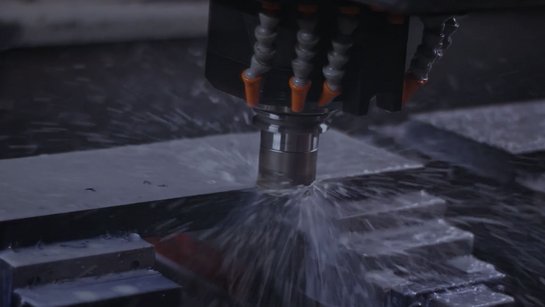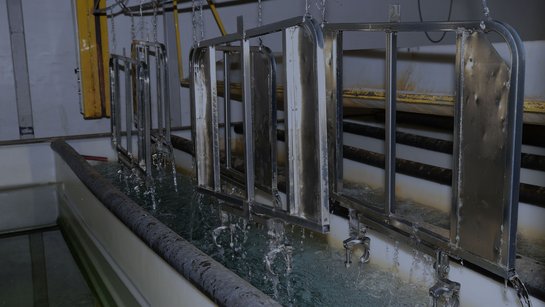
What are industrial surface finishing technologies?
, Rösler Oberflächentechnik GmbH - Volver a la vista general
Surface finishing, surface treatment and surface refinement of components to optimize their functionality:
The surface condition of components (work pieces) produced at high volumes on an industrial level generally does not satisfy the needs of the end-users. Therefore, to comply with the end-user demands, these components must frequently undergo various surface refinement operations. This is achieved with different types of surface finishing or surface treatment technologies. Their goal is to make the component surface more resistant against premature wear for a longer service life, to make the surface esthetically more pleasing, or to make it more functional by, for example, improving its anti-friction characteristics and protecting it against premature corrosion. The goals are achieved by precisely defined surface treatment methods irrespective of how complex the shape of a component might be. In this respect it is essential that the chosen treatment method can reliably and consistently achieve the specified finishes. Moreover, the surface finishing results must not exceed the specified dimensional tolerances, so that the component geometry remains intact.
The term surface treatment or surface finishing includes all surface refinement technologies used in a high-volume industrial production environment.
1. Coating systems

- Painting: Application of different types of solvent- or water-based lacquers on the component surface for protection against corrosion or UV radiation, and for making the component surface esthetically more attractive
- Powder coating: A layer of dry powder is electrostatically applied and subsequently cured under heat. Powder coatings are wear-resistant and decorative.
- Electroplating: Electrochemical deposition of a metal coating for improved corrosion protection, conductivity and decorative purposes.
- PVD/CVD (physical vapor deposition coating): Application of a thin, bonded layer on metal and plastic that enhances durability, functionality and appearance.
2. Surface preparation:

- Shot blasting: Bombarding the component surface with different kinds of blast media for general cleaning, deburring or surface roughening as preparation for subsequent coating. Available systems: Dry blasting with turbines and compressed air, wet blasting and high-pressure water jet blasting. Also, shot peening for inducing a compressive stress in the component surface.
- Pickling: Chemical surface treatment, mainly for cleaning purposes. Frequently used as a preparatory step prior to coating.
- Anodizing: An electrolytic process that creates an oxide layer on metal surfaces, especially aluminum. Improves the corrosion resistance and optical appearance of a component.
3. Surface refinement

- Mass finishing/ Polishing/ Trowalizing: Surface smoothing by, for example, vibratory, centrifugal disk, drag and surf finishing. Universally usable finishing technology for reducing the surface roughness and the creation of a high-gloss finish. Mass finishing is also used for deburring and edge radiusing to facilitate subsequent manufacturing and assembly operations.
4. Machining

- Rotary brush systems: A mechanical process for creating matt, structured and homogeneous surface finishes.
- Milling and Turning: Shaping components by removal of material. Also used for making surfaces smoother.
5. Corrosion protection

- Hot-dip galvanizing: Application of a zinc coating on steel components for protection against corrosion. The galvanizing operation is frequently preceded by a shot blasting process.
- Phosphating: Chemical process that creates a thin layer of iron, zinc or manganese phosphates on steel components as corrosion protection.
Surface finishing technologies are used in nearly all industries
Professional surface refinement is more or less indispensable in the entire manufacturing industry. It has become an operation that is essential for the automated production and assembly of a wide range of industrial components. The customers of the Rösler Oberflächentechnik GmbH come from a broad spectrum of industries, for example, steel fabrication or foundries. These two sectors frequently require large shot blast machines for de-sanding, descaling, de-rusting or surface roughening. A major user of surface treatment products and services is the automobile industry: Practically all automobile components must undergo a suitable post-processing operation for the creation of an optimal surface finish. Surface treatment technologies are also essential for the aerospace industry. This includes the intensive but, at the same time, gentle wet blasting as well as classical shot blasting like shot peening. Another critical sector for surface treatment is medical engineering. The production of orthopedic implants, orthotic components and medical instruments demands compliance with extremely demanding quality standards. This is achieved with mass finishing systems specially designed for single piece processing, for example, for polishing artificial hip and knee implants. The perfect interplay of equipment, media, compounds and processing method ensures optimal finishing results.
General purpose mass finishing systems for the cost-efficient cleaning, deburring or edge radiusing of all kinds of work pieces are utilized in many industries. It is no exaggeration that mass finishing, respectively, trowalizing, is probably the most commonly used industrial surface finishing technology.